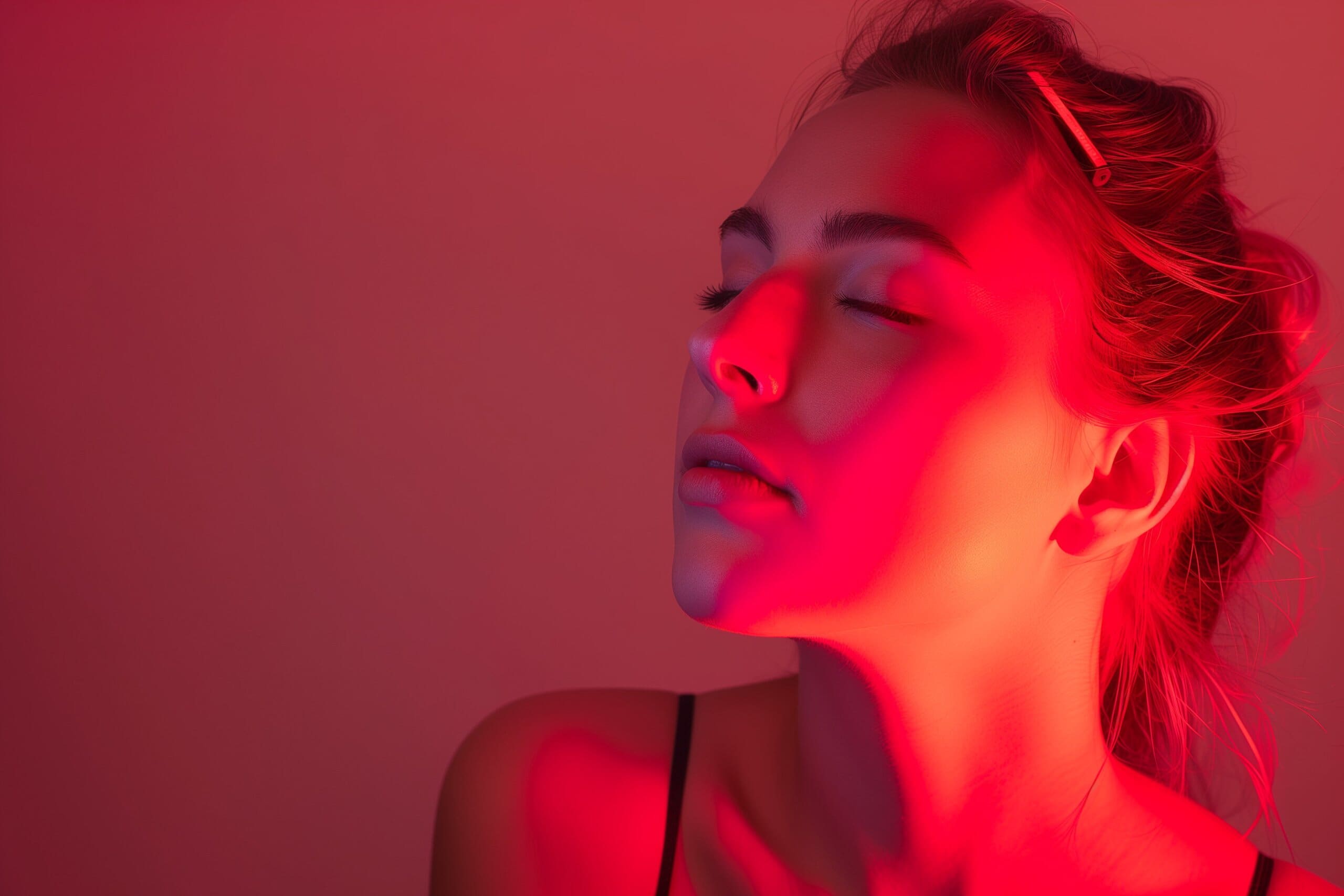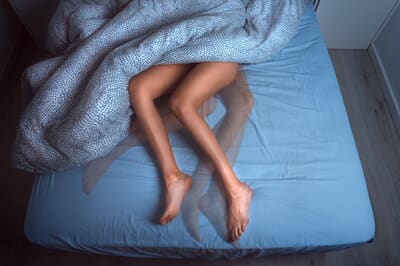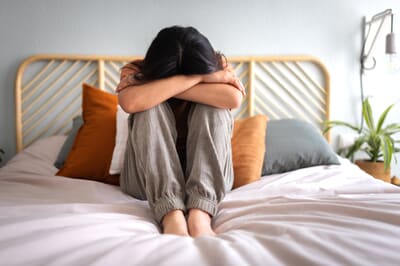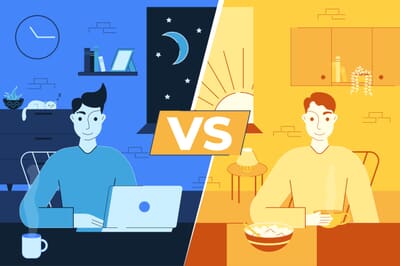Struggling with sleepless nights? You’re not alone! According to a Mintel sleep report, half of all Brits (50%) struggle to get an adequate amount of rest, with the average person clocking just six hours and 51 minutes of sleep each night when you should be getting between 7-9 hours.
Needless to say, this isn’t great, which is why red light therapy might just be the solution you’ve been looking for to get more sleep going forward!
While widely known for its beauty benefits, this cutting-edge treatment is earning praise for its ability to improve sleep quality and regulate your body’s natural sleep-wake cycle. So, if you’re curious about how it can help you achieve a more rejuvenating night’s sleep, read on as we explore how red light therapy can help transform your bedtime routine!
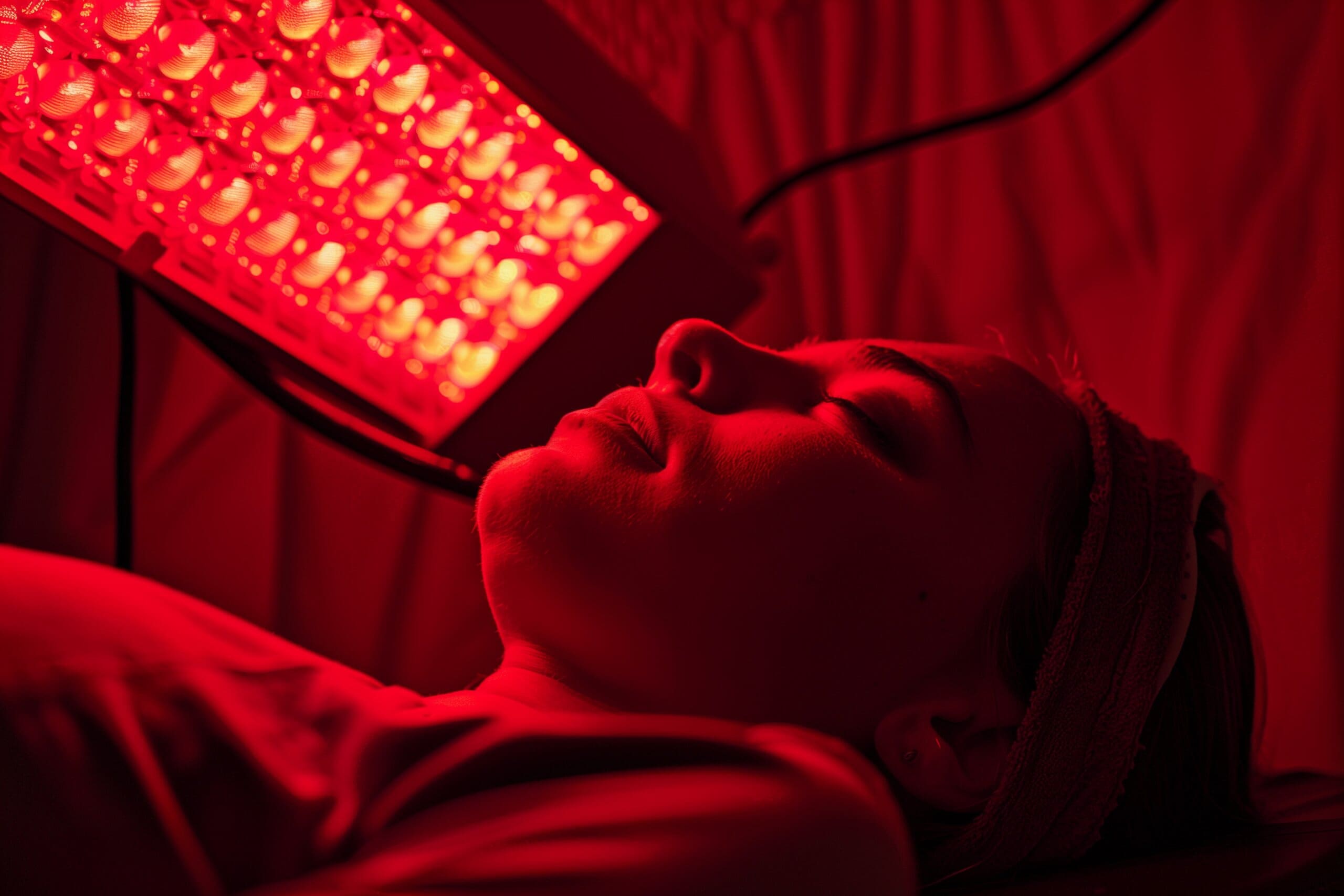
What is red light therapy?
Red light therapy is a type of treatment that involves exposing your skin to low-level red light to stimulate energy production in cells. The red light therapy itself works by activating the energy-producing cells, known as mitochondria, inside your body and encouraging them to work harder. The extra energy provided by these cells is then pumped into your body and is thought to help your body heal faster, improve blood flow, and repair damaged skin and tissues.
Red light therapy and sleep: How do they relate?
Using red light therapy for sleep is becoming an increasingly popular practice, and there’s a key theory behind this. It’s thought that red light promotes melatonin production, a natural hormone that helps regulate our sleep-wake cycles, and signals to the body that it's time to wind down.
Naturally, promoting melatonin before bed is going to help dramatically with getting to sleep sooner. To learn more about how sleep cycles work and how to optimise them for better rest, see our guide on everything you need to know about sleep cycles.
Red light therapy sleep benefits
Building on the above, red light therapy offers several benefits for sleep, from enhancing melatonin levels to promoting deeper, more restful slumber, alongside boosting collagen production, enhancing circulation, and offering pain relief.
Below are just a few of the advantages it can potentially bring to your night-time routine:
1. Regulating your sleep-wake cycle
Blue light from the sun keeps us alert and awake during the day, while red light promotes relaxation and sleep, working together to regulate our natural circadian rhythm - body clock - for restful nights. When it gets dark, our bodies begin producing melatonin, the hormone that makes us feel sleepy.
However, in today’s world, constant exposure to blue light from devices like phones and laptops can disrupt this process, negatively impacting our sleep by misleading the brain into thinking it's still daytime. In contrast, red light does not interfere with this natural cycle — a research study found that most participants who were exposed to red light showed minimal or no circadian response.
In fact, red light is believed to support melatonin production and promote a healthier, more consistent sleep pattern.
2. Increasing melatonin production
Since blue light hinders melatonin production, the theory, as mentioned earlier, is that red light, being at the other end of the colour spectrum, promotes the release of melatonin. Recent studies suggest red light therapy can enhance sleep quality, duration and latency, potentially by boosting melatonin levels.
A study by the National Library of Medicine found that red light therapy not only influences sleep but also promotes muscle regeneration and recovery, particularly in athletes, by facilitating restful sleep and improving endurance performance.
3. Reducing morning grogginess
Red light is said to reduce the groggy feeling you experience when you wake up – officially known as “inertia”. Another study published by the National Library of Medicine found that exposure to red light, both through closed eyelids during sleep (via a red light mask) and immediately after waking (via red light goggles), significantly reduced sleep inertia, improving performance and reducing sleepiness without suppressing melatonin.
4. Helping with sleep disorders
Red light therapy may be particularly helpful for those dealing with sleep disorders including different types of insomnia. It has a relaxing effect on the brain and positively impacts the nervous system, helping to reduce stress and anxiety, which in turn promotes better sleep overall.
5. Helping to alleviate pain
Research suggests that red light therapy can aid in managing long-term conditions — for example, it can support conditions like spinal cord injuries, which may disrupt sleep. One study indicates that regular red light treatments helped reduce hypersensitivity and promote sensorimotor recovery after spinal cord injuries.
6. Helping with symptoms associated with SAD
Seasonal Affective Disorder (SAD) is a type of depression that is triggered by seasonal changes, particularly during the darker autumn and winter months. According to research, just one hour of red light therapy significantly improved study participants' mood, and helped reduce depressive symptoms associated with SAD.
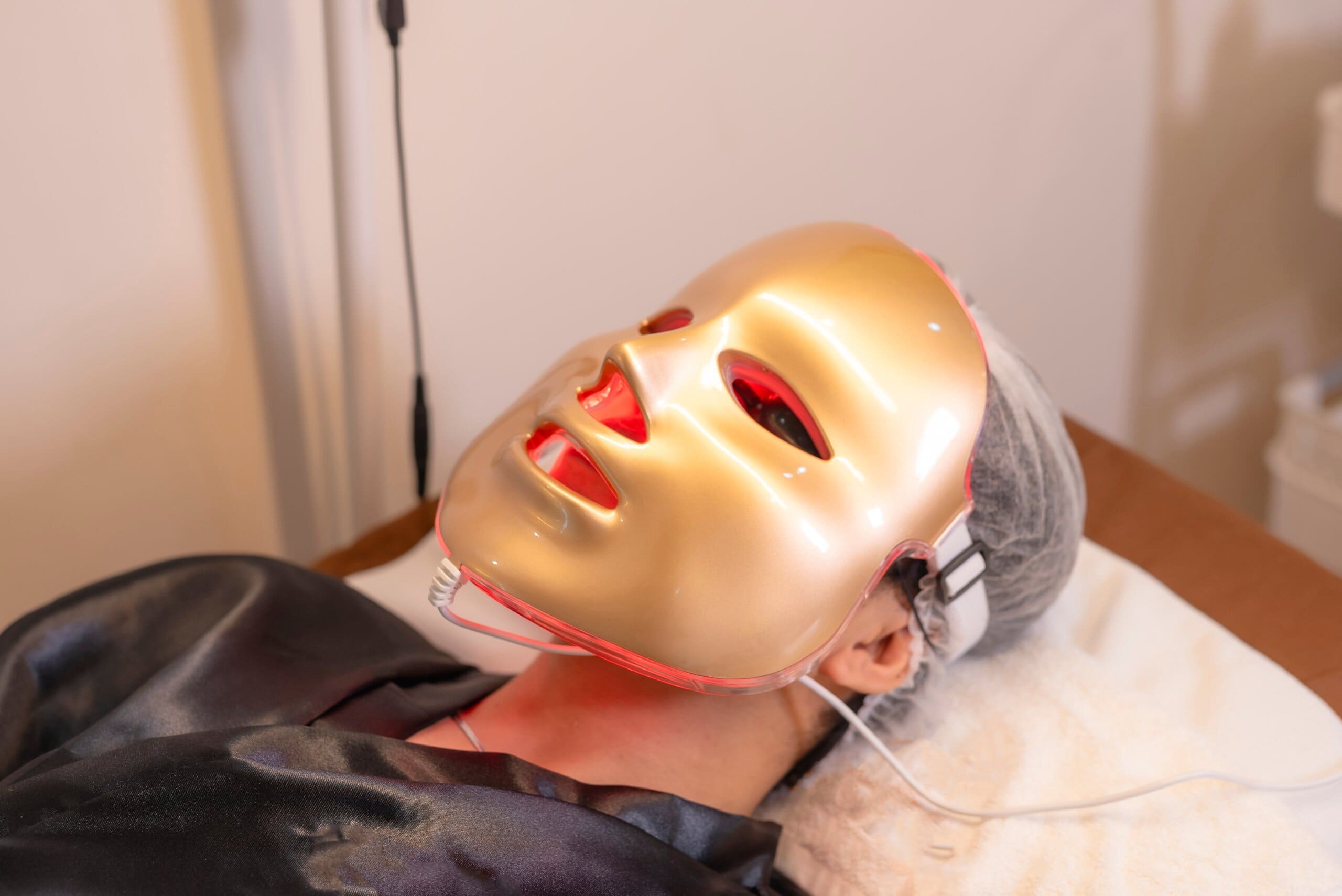
How to use red light therapy for sleep at home
The most commonly used red light therapy device at home is the lightbox, which typically requires you to sit in front of the device for a set amount of time each day. Red light therapy is also available in a wide variety of other formats, including panels, masks, alarm clocks, and lamps.
It’s important to note that red light bulbs are not the same as red light therapy devices, and do not offer the same scientifically researched benefits. We’ve collated some helpful tips to ensure you get the most out of red light therapy at home:
1. Set up a routine
To get the best results out of your red light therapy sessions, consistency is key. Establish an evening routine where you use your red light at the same time every evening, this will signal to your body that it’s time to wind down. In general, most experts recommend starting with 10-20 minutes before bed, which is usually enough to help your body get ready for sleep.
2. Avoid other lights once asleep
Since darker conditions at night are said to promote increased production of melatonin, it’s best to keep your room as dark as possible once you are asleep, just like nature intended. Try to avoid using any blue light sources, including phones or electronic devices, before and after you’ve nodded off.
3. Create an optimal sleep environment
Red light therapy is most effective when used in a relaxing environment, helping to improve both the quality and duration of sleep. Ensure that the space you use for your therapy is quiet, comfortable, and free from distractions.
Additionally, keep the room at a comfortable temperature to further promote restful sleep. And, of course, investing in a good mattress and bed frame can significantly improve your sleep routine, reducing the likelihood of tossing and turning, and making all the difference to your overall sleep quality.
4. Incorporate other relaxation techniques
To boost the benefits of red light therapy, you can combine it with deep breathing, meditation, gentle stretching, or even a sound bath. These mindful practices can contribute to the therapy's calming effects, helping you relax even further. While carrying out the therapy, you could even focus on the soothing warmth of the light to deepen your sense of relaxation and mindfulness.
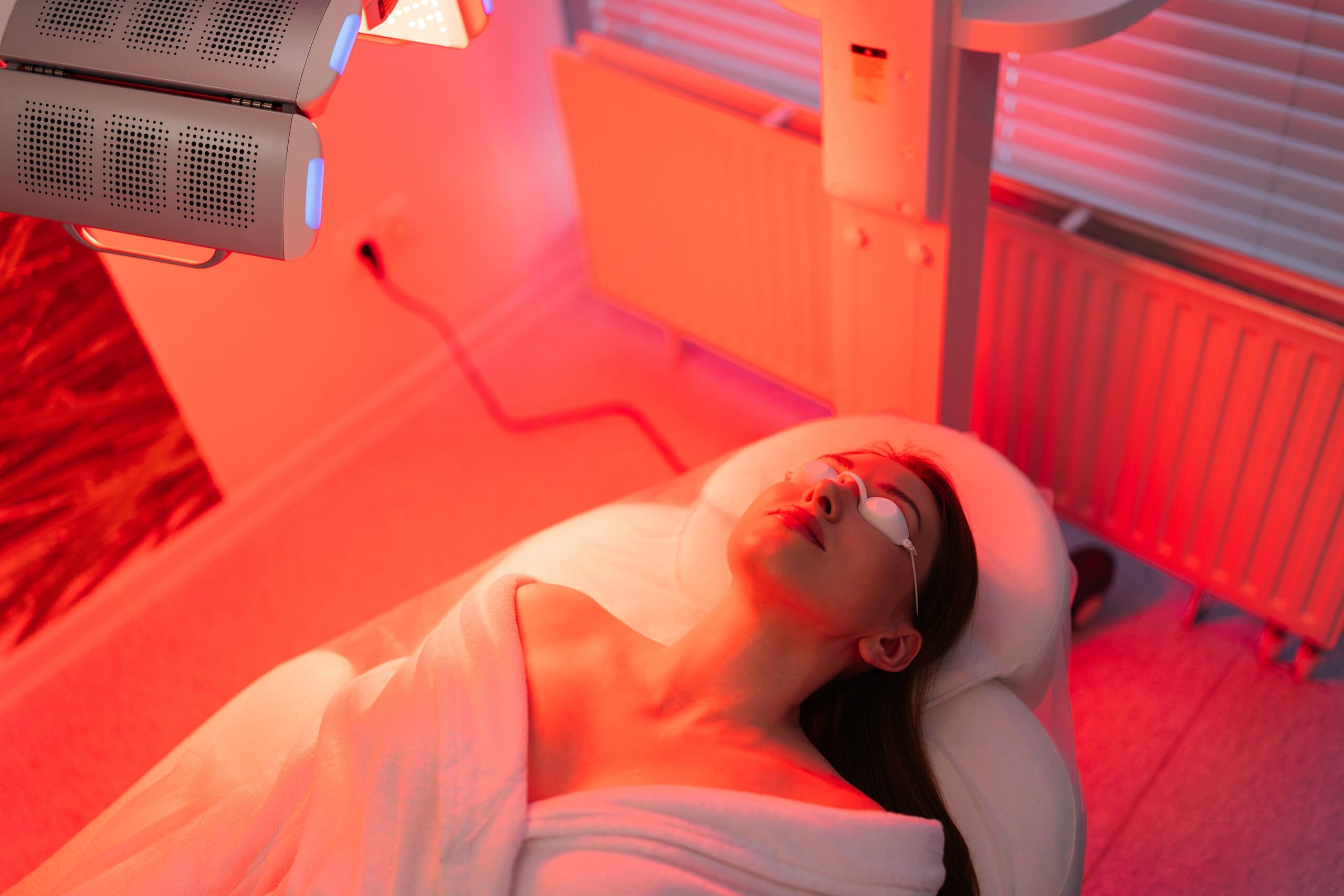
Build better sleep habits with MattressNextDay
And there you have it, that’s how red light therapy can help to improve your sleep, and tips for incorporating it into your ultimate sleeping routine. Of course, it’s going to take more than simple red light therapy to improve your sleep schedule, especially if you have a poor mattress or bed.
Fortunately, that’s where MattressNextDay can lend a hand. From pocket-sprung mattresses and memory foam options to king-sized beds and more, we’ve something for everyone in the MattressNextDay range. Get in touch today to learn more and don’t forget to head over to our Snooze News sleep blog for more expert tips on how to get a better night’s sleep.
